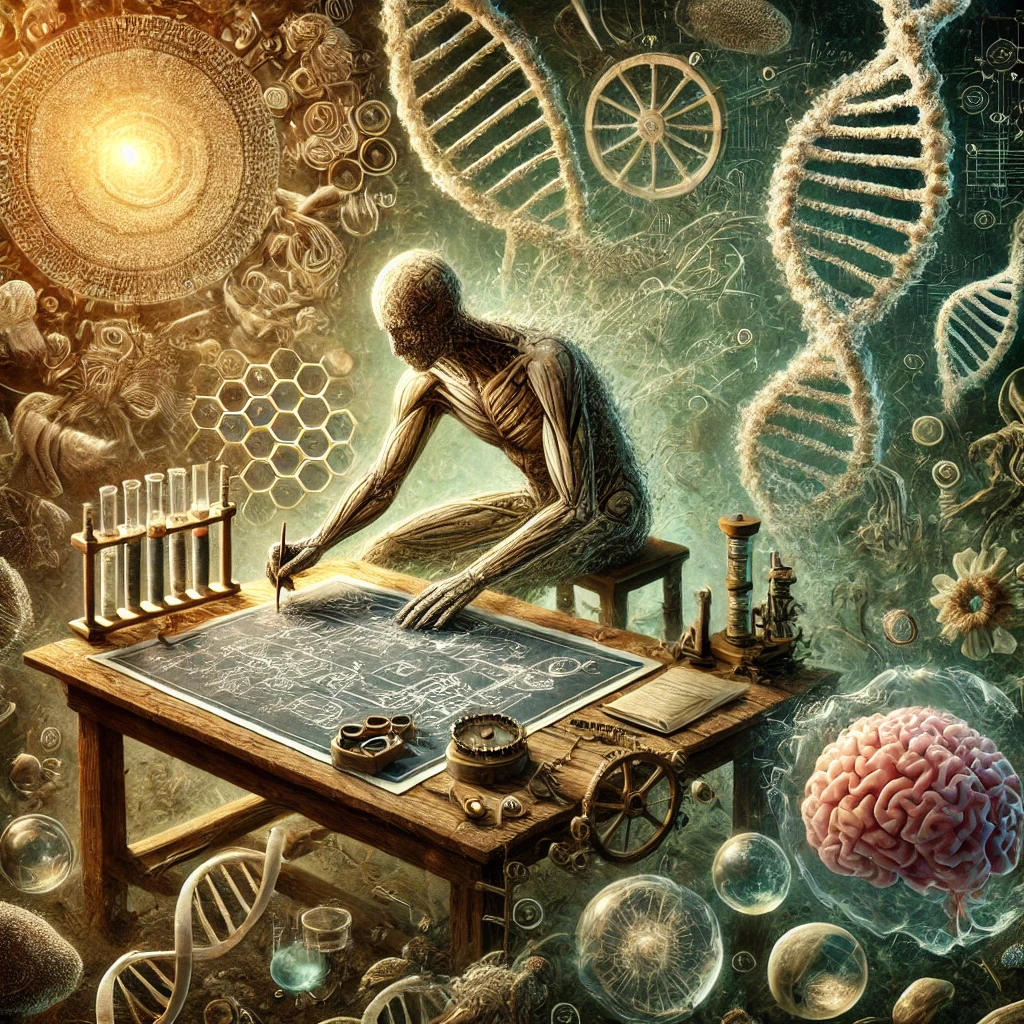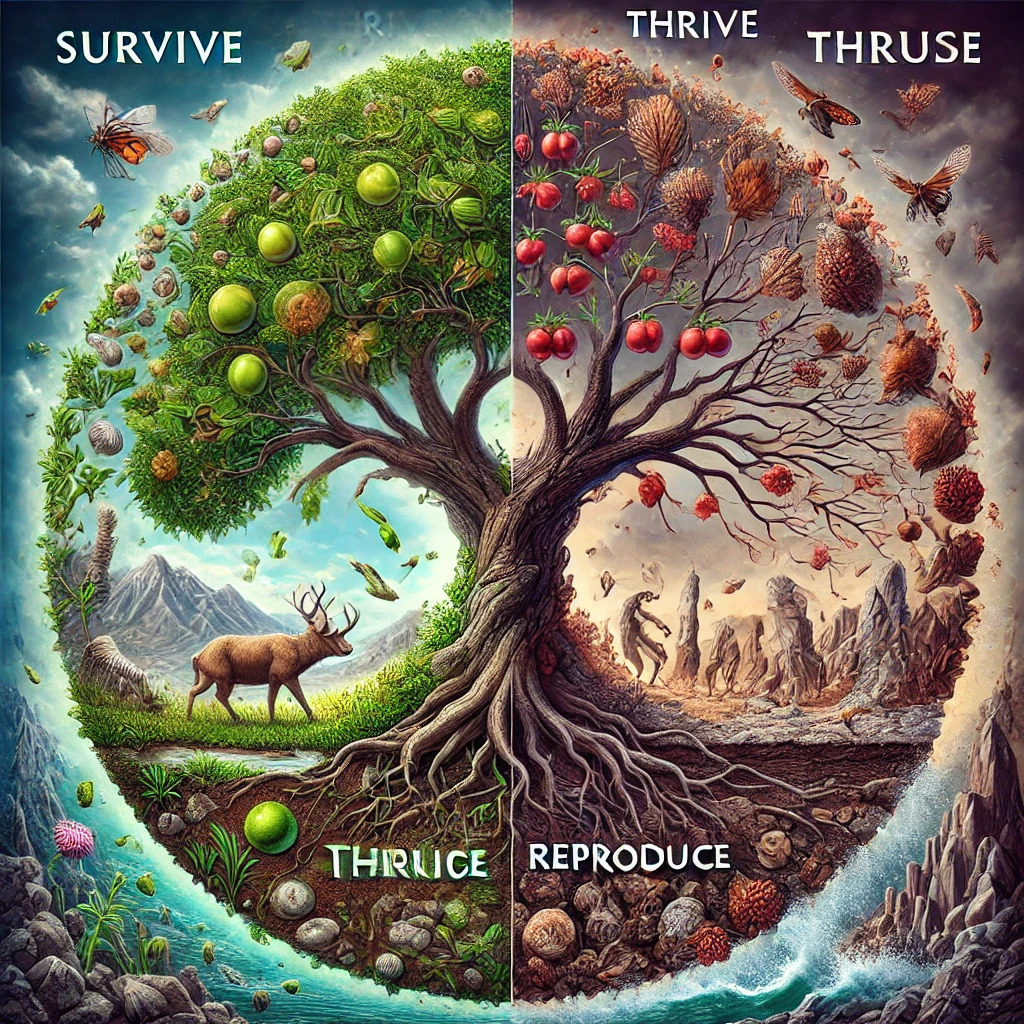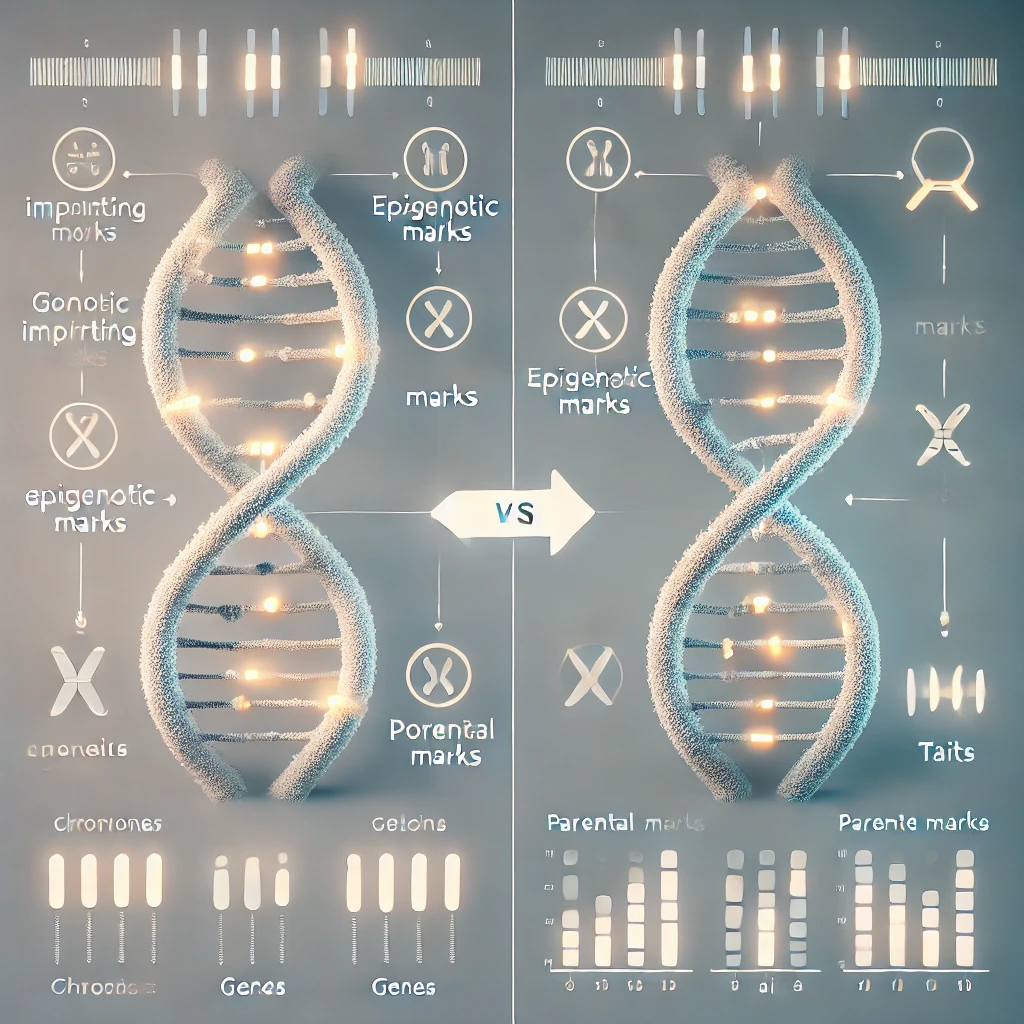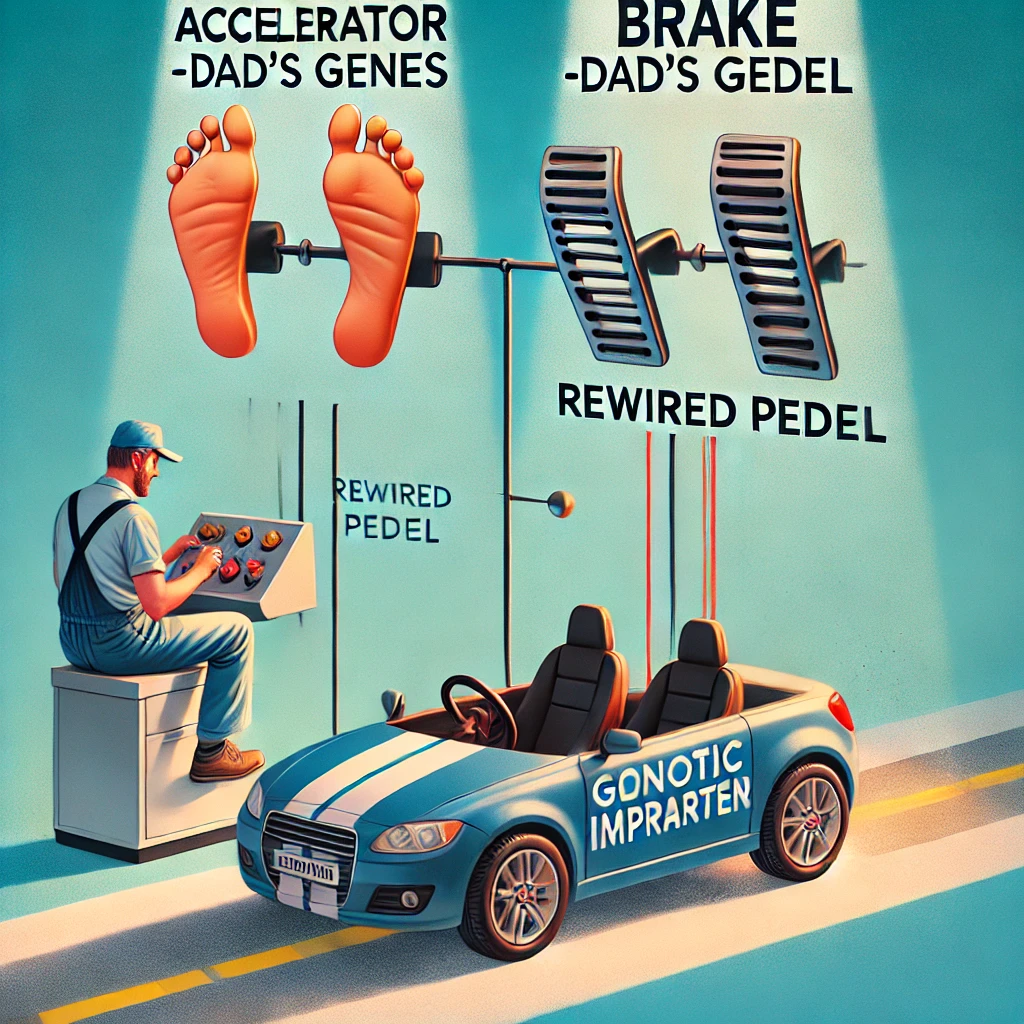Mother Nature—a poetic metaphor for the intricate, self-sustaining systems of life on Earth—has crafted a breathtakingly complex yet elegantly simple “design” for life. Over billions of years, evolutionary processes have refined this design, balancing survival, adaptation, and reproduction to ensure the continuity of life. While the term “design” might imply intention, it is crucial to clarify that evolution is an unguided, natural process driven by random mutations and natural selection. However, the outcomes of these processes often appear so finely tuned that they inspire awe, as if life were engineered by a masterful hand. Below, we explore how Mother Nature’s “design principles” address disparities, fix flaws, and perpetuate a cycle of survival and renewal.
1. Evolutionary Problem-Solving: Fixing “Glitches” in the “Design”

Life’s journey is marked by imperfections. Mutations—random changes in DNA—are the raw material of evolution. Most mutations are neutral or harmful, but occasionally, they confer advantages. Over time, natural selection acts like a filter, preserving beneficial traits and discarding detrimental ones. This iterative process allows life to “fix glitches” and adapt to challenges.
Example: The Immune System
Consider the human immune system, a marvel of evolutionary tinkering. When pathogens invade, our bodies deploy antibodies tailored to neutralize them. This adaptability stems from a genetic “toolkit” refined over millennia. Even when viruses mutate (e.g., influenza or SARS-CoV-2), our immune systems “learn” and adapt—a testament to evolution’s capacity for real-time problem-solving.
Correcting Misconceptions:
- Evolution does not “aim” for perfection. It favors traits that enhance survival and reproduction in a specific environment. When environments change, previously advantageous traits may become liabilities (e.g., large body size in warming climates).
- “Glitches” like genetic diseases (e.g., cystic fibrosis) are not “failures” of design but byproducts of evolution’s trial-and-error process.
2. The Simple Strategy: Survive, Thrive, Reproduce, and Die

At its core, life follows a universal blueprint:
- Survive: Organisms compete for resources, evade predators, and withstand environmental stresses.
- Thrive: Successful organisms grow, store energy, and form symbiotic relationships (e.g., gut bacteria aiding digestion).
- Reproduce: Genetic material is passed to offspring, ensuring the continuity of traits.
- Die: Death clears the way for new generations, preventing overcrowding and fostering genetic diversity.
Example: The Salmon Life Cycle
Salmon hatch in freshwater, migrate to the ocean to grow, return to their birthplace to spawn, and then die. Their decay nourishes the ecosystem, supporting future generations. This cycle embodies nature’s efficiency: individual sacrifice sustains the collective.
Correcting Misconceptions:
- Life’s “strategy” is not a conscious plan but an emergent property of genetic and environmental interactions.
- Death is not a “flaw” but a necessity. Without it, evolution would stagnate, and adaptation would slow.
3. Sustainable “Design”: Balancing Innovation and Stability

Mother Nature’s “designs” prioritize sustainability. Ecosystems self-regulate through feedback loops, such as predator-prey dynamics and nutrient cycling. Similarly, DNA includes mechanisms to minimize errors (e.g., proofreading enzymes during replication) while allowing controlled mutation for innovation.
Example: The Oxygen Revolution
Early Earth’s atmosphere lacked oxygen. When photosynthetic bacteria began producing oxygen as a byproduct 2.4 billion years ago, it triggered a mass extinction of anaerobic life. Yet, this “glitch” paved the way for aerobic organisms, including humans. Evolution transformed a crisis into an opportunity.
Correcting Misconceptions:
- Sustainability in nature is not static. It involves constant adjustment, not a fixed “ideal” state. But if the outcome is a perfection, and work at optimal performance Mother Nature keep it as a fundamental principle and design, like the synergistic embodiment of Mitochondria in animal cell and Chloroplasts in plant’s cells
- Extinctions are natural but accelerated today by human activity—a deviation from evolutionary timescales.
4. Transmission Through Generations: The Dance of Genes and Epigenetics

Life’s “blueprint” is encoded in DNA, but its expression is shaped by epigenetics—chemical tags that turn genes on/off without altering the DNA sequence. These tags can be influenced by environmental factors (e.g., diet, stress) and even inherited, allowing organisms to “prepare” offspring for similar challenges.
Example: Imprinted Genes
As highlighted in the CRISPR study with mice, imprinting ensures parental genes work in harmony. When scientists edited imprinted genes in embryos from two male parents, they mimicked the natural balance of maternal and paternal contributions, enabling healthy development. This shows how deeply ingrained these “design rules” are—and how they can be hacked.
Correcting Misconceptions:
- Epigenetics does not invalidate Darwinian evolution but complements it. It allows rapid, reversible adaptations.
- “Lamarckian” inheritance (traits acquired during life affecting offspring) is rare and limited, not a primary evolutionary driver.
5. The Illusion of “Purpose” and the Reality of Emergent Beauty

The phrase “Mother Nature is still on the way to fixing the glitches” risks implying intent. In reality, evolution has no goal. The “beauty” we perceive—a hummingbird’s flight, a coral reef’s biodiversity—is the result of countless iterations, failures, and serendipitous successes.
Example: The Peppered Moth
During the Industrial Revolution, soot-darkened trees favored black peppered moths over light-colored ones. When pollution decreased, the trend reversed. This illustrates adaptation, not “progress.” The moths did not “improve”; they shifted to match their environment.
Correcting Misconceptions:
- Evolution is not a ladder toward complexity. Bacteria, unchanged for billions of years, are as “evolved” as humans.
- “Beautiful design” is subjective. A tapeworm’s simplicity is as evolutionarily successful as an eagle’s majesty.
Conclusion: Celebrating Nature’s Ingenuity Without Anthropomorphism

Mother Nature’s “designs” are awe-inspiring, but they are not the work of a conscious designer. They are the product of natural selection acting on random variation over incomprehensible timescales. Life’s resilience lies in its simplicity: survive, reproduce, and let the environment sculpt the rest. By studying these processes—from CRISPR-edited mice to oxygen-producing bacteria—we gain humility and wonder. Evolution is not a promise of perfection but a testament to persistence, a reminder that life’s beauty arises not from intent, but from the relentless, collaborative dance of chance and necessity.
Final Note: While poetic terms like “Mother Nature” help us relate to these concepts, it is vital to distinguish metaphor from mechanism. Evolution is unguided, yet its outcomes are undeniably magnificent—a “beautiful sustainable design” forged not by a designer, but by time, trial, and the indomitable will to exist.
The Groundbreaking Study: Mice with Two Dads

Let’s explore the intricacies of Mother Nature’s mechanisms, through a groundbreaking study, by Chinese scientists, who untangle the enigma of mechanisms of imprinting, and successfully developed, Mice with two Dads.
Normally, embryos from same-sex parents fail because they lack the balanced imprinting tags (e.g., two sperm = too many “dad” tags). Here’s how the Chinese team overcame this:
- Mapping the Imprinting “Fingerprint”
- They analyzed embryos from same-sex parents (two moms or two dads) to identify which genes were misregulated.
- They found ~20 key imprinted genes whose tags were causing developmental roadblocks.
- CRISPR Gene Editing to the Rescue
- Using CRISPR, they edited these genes to mimic the correct parental tags. For example:
- Turned off “dad-promoting” genes that were overly active.
- Turned on “mom-limiting” genes that were silenced.
- This created a balanced imprinting pattern, tricking the embryo into developing normally.
- Using CRISPR, they edited these genes to mimic the correct parental tags. For example:
- The Result
- After hundreds of attempts, 7 healthy mouse pups were born from two male parents. These mice grew to adulthood and even had offspring of their own.
Why This Matters
- Solving the Imprinting Puzzle: The study shows that imprinting errors can be fixed, revealing how crucial these tags are for life.
- Beyond Same-Sex Reproduction: This research could help:
- Treat infertility caused by imprinting defects.
- Improve cloning techniques (cloned animals often have imprinting issues).
- Shed light on human genetic disorders linked to imprinting.
Genomic Imprinting: The “Parental Tags” That Shape Life

To understand imprinting, imagine your DNA as a vast library of instructions (genes) that tell your body how to develop and function. But there’s a twist: some of these instructions come with parental “tags”—chemical labels added during sperm or egg formation that determine whether a gene is active (turned on) or silent (turned off) in the embryo. These tags ensure that only one copy of certain genes (either mom’s or dad’s) is used, even though you inherit two copies (one from each parent).
Why Imprinting Exists: A Biological Balancing Act
Imprinting evolved as a way to balance conflicting “interests” between maternal and paternal genes:
- Dad’s genes often promote growth (to maximize survival of his offspring).
- Mom’s genes often limit growth (to conserve her energy for multiple pregnancies).
This tug-of-war ensures healthy development. If both copies of a gene were active, it could disrupt this balance.
How Imprinting Works: The Science Simplified

- DNA Methylation: The Chemical “Tag”
- During sperm or egg formation, small chemical markers called methyl groups are added to specific genes.
- These tags act like on/off switches. For example:
- A gene tagged with methyl groups in the sperm (paternal copy) might be silenced.
- The same gene in the egg (maternal copy) remains active.
- Parent-of-Origin Specificity
- Each parent contributes unique methylation patterns. For instance:
- The Igf2 gene (promotes growth) is active only from the dad.
- The H19 gene (limits growth) is active only from the mom.
- These tags persist after fertilization, ensuring the embryo uses the correct parental copy.
- Each parent contributes unique methylation patterns. For instance:
- Critical for Development
- Imprinted genes often regulate:
- Fetal growth
- Placental development
- Brain function
- If the wrong copy is active (e.g., both mom’s and dad’s Igf2), development goes haywire.
- Imprinted genes often regulate:
What Happens When Imprinting Fails?
Errors in imprinting cause severe disorders or embryo death:
- Prader-Willi Syndrome: Caused by missing paternal genes on chromosome 15. Symptoms include insatiable hunger and developmental delays.
- Angelman Syndrome: Caused by missing maternal genes on the same chromosome. Symptoms include seizures and a happy, excitable demeanor.
- Failed Embryos: If imprinting tags are missing or mismatched, embryos often stop developing early.
Real-World Analogy

Imagine a car with two accelerators (dad’s genes) and no brakes (mom’s genes). The car would speed out of control. Imprinting ensures you have one accelerator and one brake. In the study, scientists took a car with two accelerators (two dads) and rewired some pedals to act as brakes, allowing the car to drive smoothly.

Key Takeaway
Imprinting is nature’s way of ensuring parental genes work as a team. By hacking this system, scientists have pushed the boundaries of reproductive biology, showing that life’s rules—while strict—aren’t always unbreakable.
